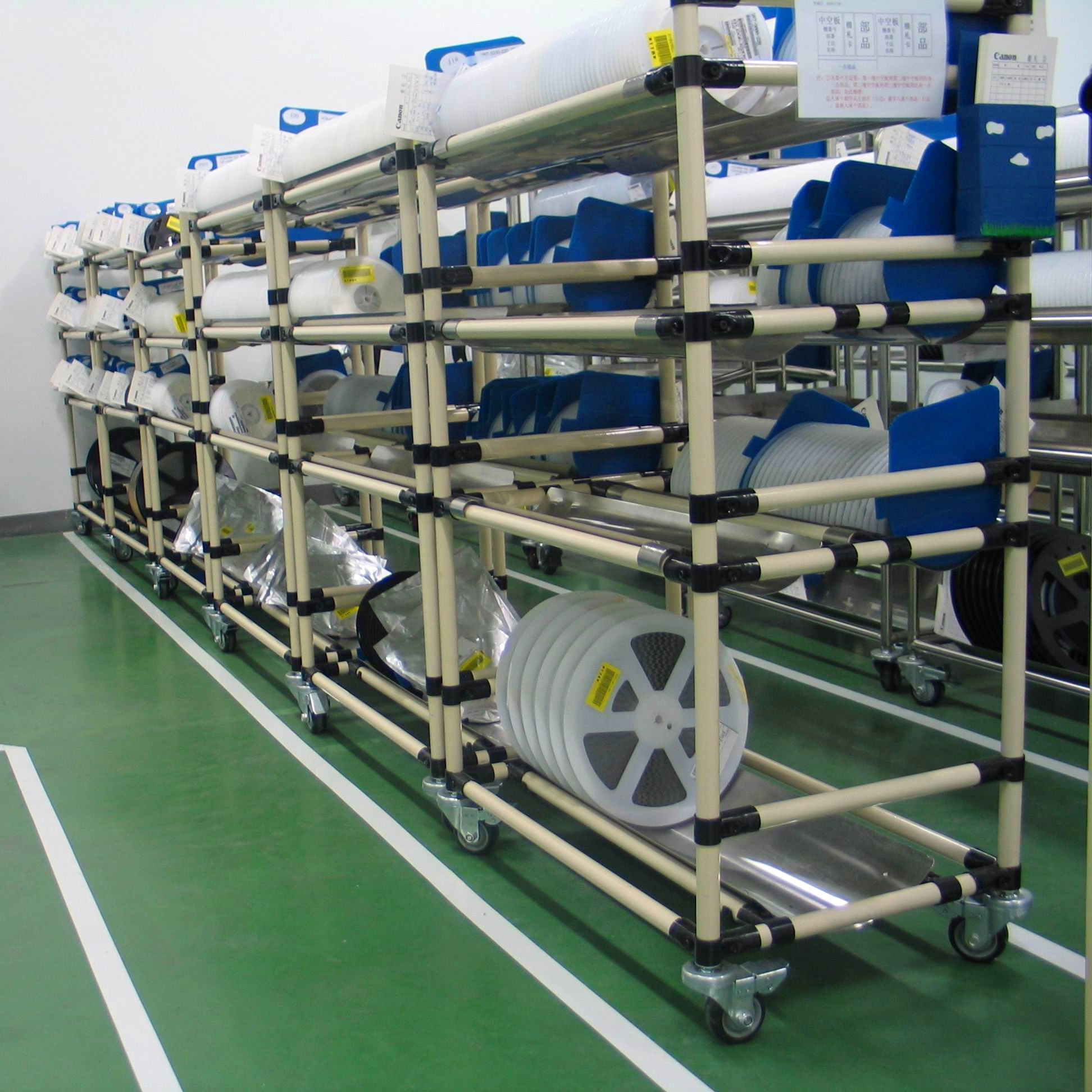A complete set of storage shelves is assembled from columns, beams, shelves, and some accessories. Although the overall structure of the shelf is simple, it is stable, and these components are also essential. Below, we will take you to understand the structure and specific accessories of the shelf.
Composition accessories
1、 The pillar is the pillar of the shelf, used as a "leg" to support the shelf on the ground. Generally, a set of storage shelves consists of four columns. Each two are composed of transverse brace and slant support to form a column piece. When a shelf continues to extend laterally from a group, the extended shelf is called a secondary shelf. Since the secondary shelf is attached to the main shelf, only one column piece is needed.
2、 A crossbeam is equivalent to a beam in a building. Its two ends are fixed on two columns respectively, forming a horizontal bar spanning the two column pieces. Each level is generally composed of two or more crossbeams, mostly two. For example, heavy-duty shelves have pallets and their contents placed on two horizontal beams on each level.
3、 Laminated boards are not components of storage shelves. For example, heavy-duty shelves that hold pallets do not require laminated boards, and pallets can be placed directly on the crossbeam. But for shelves without shelves, storage media such as pallets are required when storing and retrieving goods. When there is no media and the shelf is directly placed on the shelf, shelves are needed. A laminated board is a flat panel that can be made of wood or steel. It is placed on the crossbeam, and the goods are then placed on the layer board.
4、 Other accessory storage shelves are usually used in conjunction with other equipment. Common supporting equipment includes storage forklifts, pallets, storage cages, ladders, handcarts, guardrails, backnets, anti-collision guardrails, anti-collision corner protectors, and so on. Different supporting equipment meets the storage needs of different situations, increasing the efficiency and convenience of goods storage and retrieval.
structure
Main and sub rack cargo
The rack is mainly formed through the continuous connection of columns and beams to form a large-scale storage structure. In theory, wireless combination connection can be achieved. The main frame of the shelf is a "reliance" of the secondary frame, usually composed of two columns and two crossbeams, which can be used independently.
A main frame can connect countless sub frames, and since one column is omitted from the sub frame, the overall cost is reduced. If this form is not adopted, it will increase the cost of manufacturing and using the shelves. The selection of main and auxiliary racks should be based on actual storage needs.
